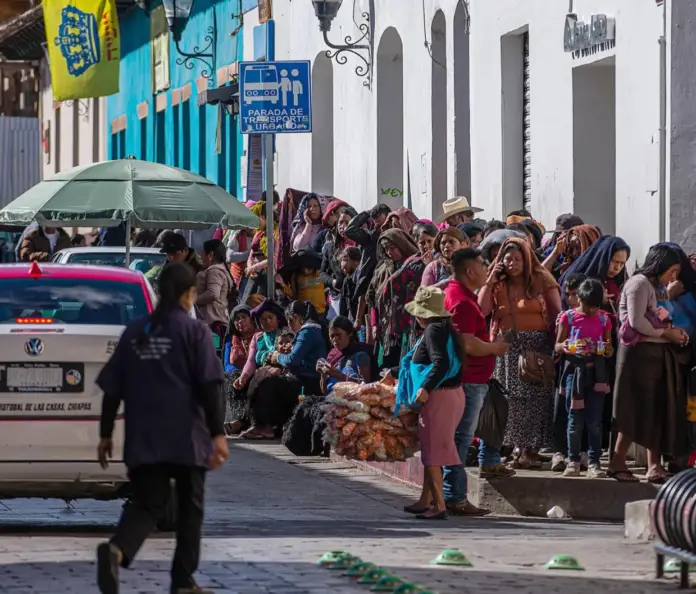Remittances from the United States fell 40 percent in February in San Cristóbal de las Casas, the Mexican municipality that receives the most of these incomes, amid the uncertainty caused by the return of Donald Trump to the White House.
“In this month of February we are seeing that it has been reduced and it is being reduced more, because we are talking now about 40 percent (in the reception of remittances). Yes, this month it is being reflected,” Blanca Emma Elizalde, the person in charge of the area of the Financiera Bienestar (Finabien) of the Government, told EFE.
San Cristóbal de las Casas is the municipality that receives the most remittances in Mexico, with almost 950 million of the record of 64,745 million dollars that the country received at the national level in 2024, according to data from the Bank of Mexico (Banxico).
In addition, Chiapas is a national leader in these revenues, since remittances represent almost 16 percent of the Gross Domestic Product (GDP), an indicator that exceeds any other state in Mexico.
Families resent the uncertainty
Remittances have slowed in Mexico, since despite 11 years of increases, including a 2.3 percent rise in 2024, a streak of 46 months with consecutive year-on-year growth ended last March.
In December alone, remittances fell 4.9 percent year-on-year to $5.228 billion, the lowest figure in the last nine months.
This occurs amid concerns about Trump measures such as deportations and a possible 10 percent tax on money transfers from the United States, which would cause losses of up to $13 billion in remittances that Mexico receives each year, according to researchers from the University of Guadalajara who told EFE.
This prospect frightens Mexicans who depend on this income, like Fernando Gómez, a craftsman from San Cristóbal de Las Casas who receives dollars from relatives in the United States.
“The less money comes from there (the United States), the less production we will probably have, not only in amber (a type of handicraft), but in all aspects, in terms of restaurants, services, it will always affect us, we get used to more money coming in and the economy flowing more,” he explained to EFE.
In particular, mass deportations are worrying because Mexicans are about half of the 11 million undocumented people in the United States and their remittances represent almost 4 percent of the country’s GDP.
Indigenous families are also worried because their relatives acquired a debt with human traffickers to cross illegally into the United States, with interest ranging from 20 to 25 percent.
“It is worrying for some of us who have relatives there, they barely left and, if they are rejected. How are they going to pay such a large debt? (270 thousand pesos plus interest),” added the artisan.
The uncertainty affects indigenous women in particular, who manage these remittances to buy food, grains and construction materials.
“(There is) some fear because of the deportations that the ruler there is carrying out, (my relative) tells me that there are no deportations where he is, but he is afraid, and they are in danger,” Elena Santiz, a young woman from the Tzeltal ethnic group who uses the money to buy corn, beans, sugar and construction materials, told EFE.

Source: lopezdoriga




